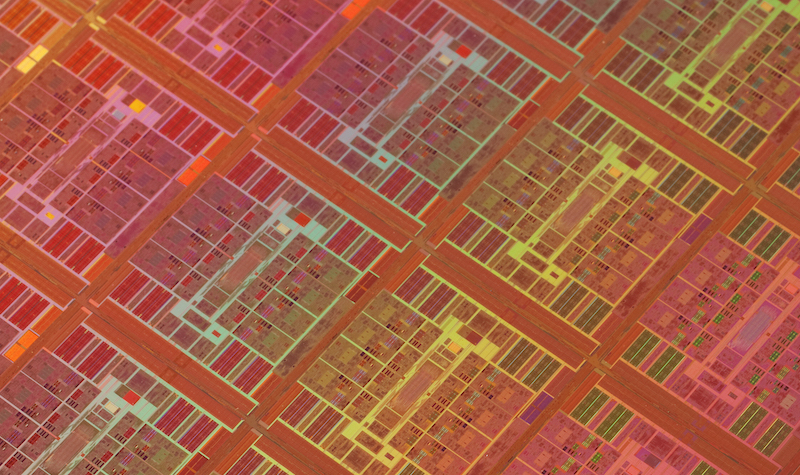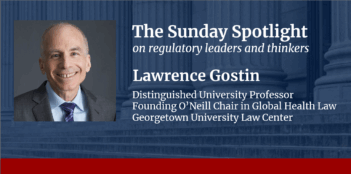
Marching-in could allow federal government to commercialize inventions, but at the expense of patent rights.
Health care providers are vaccinating Americans against COVID-19 free of charge with vaccines provided by the federal government.
But what if vaccine manufacturers had sat on their patents and dawdled? Would the federal government have had any option but to wait?
The 1980 Bayh-Dole Act offers federal agencies “march-in rights” to license private patents to others, bypassing a patent’s usual exclusivity. Although federal agencies are unlikely to march-in on COVID-19 vaccine-related patents given the progress in administering vaccines, such threats threats to do so can spur companies to change course, and past efforts to march-in may inform future attempts. The government’s right to authorize the sharing of patents with others presents a powerful option for the federal government when dealing with patented inventions, although doing so could impact innovation activity more broadly.
The Bayh-Dole Act is better known for stimulating the commercialization of innovations by facilitating nonprofits and small businesses’ ability to patent inventions that they develop with federal funding. And in its four decades, the legislation has reportedly “directly contributed to well over $1.3 trillion in U.S. economic growth, more than 4.2 million jobs, and over 11,000 new startup companies.”
The Bayh-Dole Act prioritizes getting new developments from the laboratory into the public’s hands. The law’s authorization of march-in rights provides another avenue for the federal government to help transform technological breakthroughs into usable forms. When a federal agency marches-in, it requires the patent holder “to grant a nonexclusive, partially exclusive, or exclusive license in any field of use to a responsible applicant.”
To march-in on a patent, the federal government must satisfy several conditions. The patent must result from federal funding. The patent holder must have refused to grant a license, and the ensuing march-in license must be “reasonable under the circumstances.” In addition to meeting these requirements, the funding federal agency must also determine that one of the following four circumstances applies to justify marching-in:
- The patent holder cannot or appears unable “to achieve practical application of the” invention in “a reasonable time.”
- The patent holder cannot reasonably “alleviate health or safety needs” that the invention would address.
- The patent holder cannot reasonably “meet requirements for public use specified by federal regulations.”
- The patent holder has not satisfied another provision of the Bayh-Dole Act that requires substantially manufacturing the invention domestically.
Despite the Bayh-Dole Act’s transformative effect on U.S. innovation by reportedly facilitating over 420,000 invention disclosures, no federal agency has ever exercised a march-in right. On about a dozen occasions over the years, however, third parties have petitioned a federal agency, usually the National Institutes of Health (NIH), to march-in. Even though federal agencies have uniformly refused to march-in, their rejections reveal principles that may guide future evaluations of march-in petitions.
In the first petition, biotechnology company CellPro asked the NIH in 1997 to march-in on Johns Hopkins University patents on stem cell separation and grant CellPro a license, alleging that Hopkins and its licensees were acting too slowly to commercialize the technology and to “alleviate health or safety needs.” A court had found that CellPro’s stem cell separation device infringed on the Hopkins patents, and so CellPro pursued marching-in as a way to get around this infringement.
Describing the march-in right as applying in “very limited circumstances,” the NIH rejected the petition. The NIH credited Hopkins and its licensees’ clinical trials and prototype testing as sufficient efforts to develop the invention. The NIH also concluded that Hopkins and its licensees adequately met health and safety needs, especially given their promise—which the NIH would monitor for fulfillment—to serve any hospitals then relying on CellPro’s rival technology.
The NIH established that the availability of a single treatment satisfied patient access concerns and set a high bar for demonstrating unreasonable addressal of unmet health needs. The NIH also emphasized that it focuses on supporting biotechnology development generally, rather than any specific company such as CellPro, and expressed a reluctance to intervene in markets due to the potential to hinder unrelated, future innovation development.
In 2004, after Abbott Laboratories raised the price of an AIDS-drug, Norvir, almost fourfold, public citizens and Congresspersons petitioned the NIH to march-in on Norvir-related patents to enable production of a cheaper generic. The NIH rejected the petition, finding that Abbott adequately enabled public use of Norvir and a lack of evidence that marching-in would address “any health or safety needs.” The NIH called marching-in an “extraordinary remedy” inappropriate for resolving drug pricing issues, which it felt Congress was better positioned to address.
In 2010, patients with Fabry Disease petitioned the NIH to march-in on Genzyme-held patents for the Fabrazyme treatment to increase supply given Genzyme’s manufacturing challenges. The NIH rejected this request as well, with heavy emphasis on the practical inability of marching-in to address the scarcity issue.
The NIH assessed that no other company was positioned to use the Fabrazyme patents quickly enough to increase supply faster than Genzyme’s own estimated production increases, but the NIH did indicate that it would reevaluate marching-in if another such company did emerge. Ultimately, no company did, and the NIH monitored Fabrazyme production to ensure that Genzyme fulfilled its promise to boost supply.
The NIH also rejected several other march-in petitions in 2004, 2013, and 2016 for similar reasons and has reportedly rejected an additional handful of requests in unpublished decisions.
In August 2020, 34 state attorneys general petitioned the NIH, U.S. Food and Drug Administration, and U.S. Department of Health and Human Services to march-in on Gilead’s remdesivir for COVID-19 management, alleging that Gilead was unable to supply remdesivir adequately and that the price was too expensive.
The agencies have not yet publicly responded to this request, but commentators doubt that marching-in will result, disputing whether remdesivir’s development relied on federal funding. Commentators also highlight previous resistance to apply marching-in to drug pricing, question whether remdesivir’s price is indeed inappropriately expensive, challenge how quickly another manufacturer could meet demand, and warn of the potential chilling effect on other, unrelated research and development activities.
Although marching-in is an extraordinary remedy, proponents may wonder when marching-in would ever be appropriate, if not “during an unprecedented worldwide pandemic.” But many other observers still caution against marching-in for fear of introducing uncertainty in an already productive American innovation landscape and the potential for negative consequences of any marching-in—COVID-19-related or otherwise—to reverberate well beyond the patent marched-in on.
Even if the federal government never marches-in, however, the mere possibility of a march-in may be enough to nudge companies and nonprofits to act to ensure that they never face a march-in.



